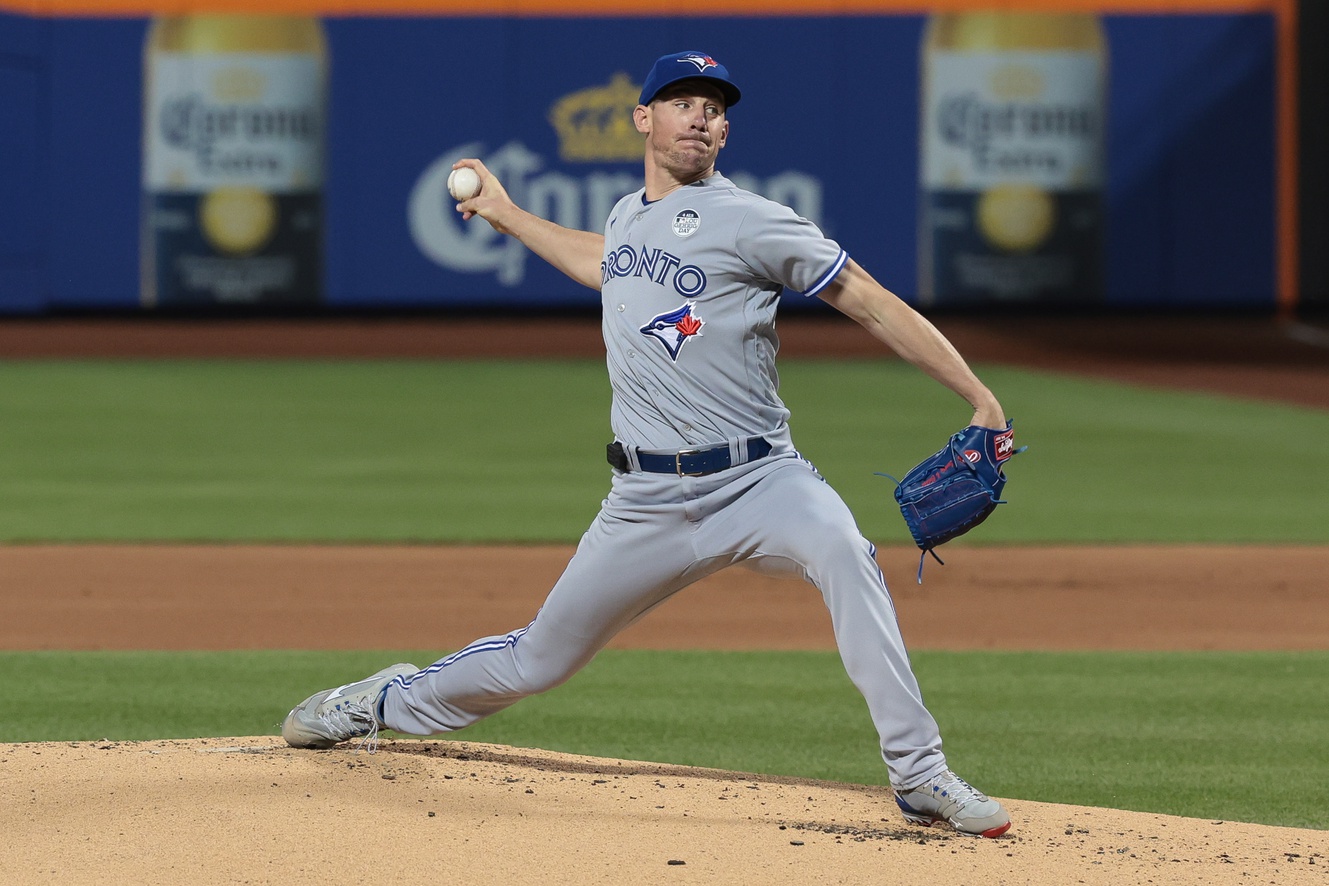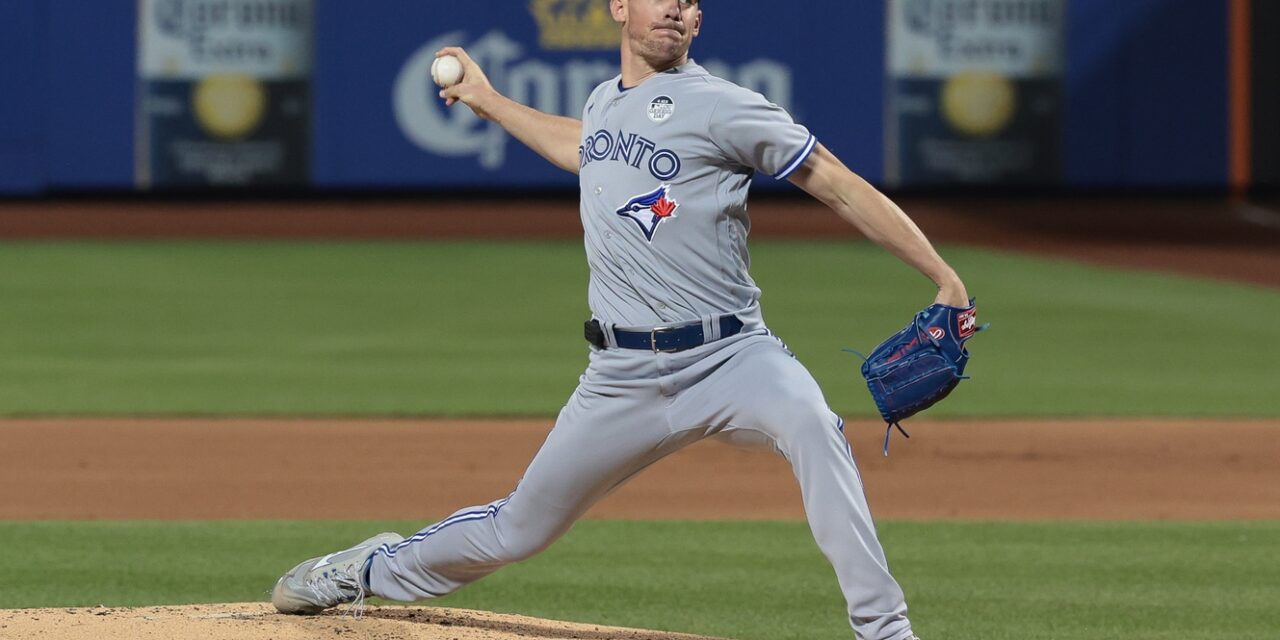
Vincent Carchietta-USA TODAY Sports
After sweeping the Phillies in three, the New York Mets gave them right back, taking the broom at the hands of the Blue Jays. The series encapsulated much of what has gone wrong this season for the Mets: a vastly underperforming offense, no answers to struggling opponent pitchers, a starting pitcher who can’t get out of his own way, relievers blowing games, and befuddling decision-making from the manager.
As the season approaches its 40 percent mark, Mets management, players, and fans need to start looking in the mirror and asking if this is who they really are: a thoroughly mediocre team. Obviously, there is still a long stretch ahead, but decisions about who to play, when to play them, and who will stay and go will largely hinge on that evaluation. There may also be some principal-agent problems going on for the Mets, further confusing the decisions coming down.
3 Up
Verlander and Megill Rebound
Justin Verlander and Tylor Megill were both seeking rebounds after previously terrible starts; in Megill’s case, it was two consecutive downers. Despite taking the loss in the opener, Verlander pitched six innings of five-hit, one-run ball. It certainly wasn’t perfect: he needed 117 pitches just to get through six (19.5 per inning), surrendered a home run to the first batter of the game, and walked three batters. However, the Mets will take his results, including the eight strikeouts he recorded. This was the first game all year that the Mets lost when their starting pitcher went at least six innings.
Megill, meanwhile, continued his solid results at Citi Field compared to disaster on the road. He went 5.1 innings, giving up five hits, just one run, and five strikeouts. What did him in, though, were five walks that drove his pitch count up to 103. Still, after back-to-back games in which he didn’t make it past the fourth inning, this counted as progress for Megill.
The Mets went one full turn through the rotation without a single starter giving up more than one earned run, yet they still went 3-2 in those games. Alas, the streak itself also ended in the next start.
Marte Moving Up?
Amidst all the offensive futility, Starling Marte had a positive series. He had hits in all three games, including a 2-for-4 effort in the finale with a trademark Marte line drive home run. Overall, he finished 4-for-11 hitting out of the No. 6 spot. If he can string together some more positive results, he’ll likely be pushed back up to the two spot once more.
Pham Goes Bam (Twice)
There isn’t much else to be positive about in this series, so Tommy Pham‘s two home runs in the finale will need to do it. Because of his small sample size (just 94 at-bats), that pushed Pham’s OPS to .784, the third-best on the team.
There has been much discussion about which player will be sent down to the minors to make room for the returning Omar Nárvaez. Some have brought up Pham’s name due to his struggles, but that was never a realistic option due to the Mets’ lack of depth in the outfield. Still, a two-homer day right before the decision needs to be made was a good way for him to ensure his spot (even though its recency bias and one-game sample size should not factor into such a decision, technically).
3 Down
Offensive Malaise Continues
There’s just not much more to write about regarding the Mets’ offense. After winning three games against the Phillies in which they scored a combined 10 runs, their offensive output was reduced to seven and culminated with three losses. 0-for-19 with runners in scoring position isn’t going to cut it; four solo homers with an inability to gain baserunners won’t in the long run, either.
At this point, another player joins the not-hitting party every few days. Francisco Lindor is mired in a funk that spans over a month, as he is hitting .210/.244/.363 in his last 30 games. That is more than just a cold streak; it is akin to his play from 2021 when he hit .204/.293/.344 in the month of May.
The good news for Lindor is that he started to come out of it in June of that season and was red-hot in 12 July games. The bad news is that his 7.4% walk rate is currently one of the lowest of his career, while his 22.6% strikeout rate is a career-high. Furthermore, he had never exceeded a 16% strikeout rate in Cleveland; he did so in both 2021-22 with the Mets at 18.3% and 18.8%.
Meanwhile, Pete Alonso‘s record-breaking 72nd career home run at Citi Field obscured the fact that he went 2-for-12 in the series. Jeff McNeil went 1-for-12. Brandon Nimmo and Mark Canha had two of the best series by Mets hitters at 2-for-9 for the pair of them. Francisco Álvarez and Brett Baty went 0-for-7. Mark Vientos went 1-for-6 (albeit with one well-struck out with a .940 xBA). It was a collectively futile effort.
Blue Jays Wait Out Senga
Not long before the series finale against the Blue Jays, I posted an article about Kodai Senga‘s stark home-road splits. My conclusion was that despite the small sample size, it was most likely at least somewhat attributable to the opponents Senga had faced at Citi vs. away, especially with regard to chase rates. I cautioned that Toronto was 11th-best in the majors in chase rate, a sign that Senga could struggle against them.
The media narrative is going to be that Senga couldn’t take four days’ rest, and perhaps that’s true. However, the Blue Jays’ approach to the game also played a factor. In the first inning, George Springer and Bo Bichette did Senga some favors by swinging early at pitches that were either borderline or completely out of the zone. However, Vladimir Guerrero Jr. waited Senga out and walked on five pitches. The Mets got out of the inning on Álvarez’s pickoff of Guerrero, but the 15 pitches Senga threw in the first were a harbinger of things to come.
In the second inning, Brandon Belt once again did Senga a favor by swinging at a 3-2 fastball out of the zone after having been up 3-0 in the count. However, Matt Chapman waited out the forkball to draw a walk, followed by Daulton Varsho‘s laser-struck single on a ball left up in the zone. Once again, Senga fell behind 2-1 in the count and left a fastball over the plate, which Whit Merrifield hit to center field for a two-run double. Though Senga escaped the second by getting Springer to line out, it was not the end of Senga’s troubles.
In the third, after Bichette grounded out, Guerrero took Senga deep to make it 3-0. Even Citi Field couldn’t hold back the 108.3-mph scorcher. Senga gave up a fourth run in the inning when Matt Chapman doubled and scored on a two-base error by Álvarez trying to pick him off second on a walk. After one more walk that included two forkballs in the dirt on 2-2 and 3-2, Senga’s day was done.
Though the Blue Jays gave Senga occasional help by swinging early at pitches out of the zone, they mostly confined their swings to pitches within the zone. That was a problem for Senga, who walked five and struck out three in 2.2 innings of work. The four hits he allowed measured in at 110.9, 97.6, 108.3, and 109.5 mph. The Blue Jays were sitting on his pitches in the zone while letting his best pitch, the forkball, mostly go by.
Senga will likely continue to face these troubles against teams with better plate discipline. The shorter rest may have been part of what had his fastball and cutter mashed in the zone, but it was not the crux of the larger issue that has plagued him.
Bullpen Blows Two
Despite the Mets’ lackluster offensive output, they still had a chance to win all three games in the series. In the opener, the game was 1-0 until the ninth inning, when Jeff Brigham surrendered two more runs to give Toronto breathing room.
In the middle game, though, the score was knotted at one in the ninth when Springer singled off David Robertson with one out and then stole second. Though Bichette struck out for the second out, Showalter chose not to intentionally walk Guerrero to pitch to the struggling Cavan Biggio (or a pinch hitter that Toronto might have chosen in his stead). Guerrero made the Mets pay, hitting the go-ahead double that decided the game, 2-1.
Even in the finale, after Senga scuffled, the Mets rallied back with four solo homers to eventually tie the game in the sixth. However, that didn’t last long, as Dominic Leone gave up a single to Guerrero and then a go-ahead two-run homer to Belt. That was the end of that for the Mets.
While it would be shortsighted to blame the bullpen for the series loss, they certainly played a part in all three defeats.
The Mets head to Atlanta on Tuesday night for the start of a six-game road trip, beginning against the division-leading Braves (7:20 p.m. ET).















